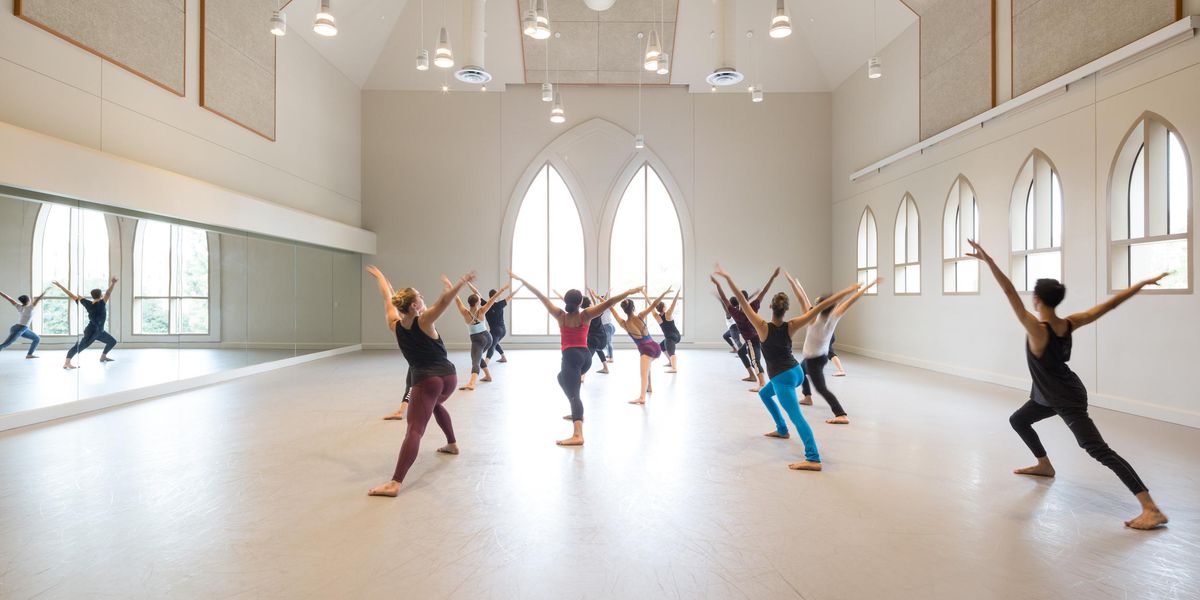Why Akram Khan Is Major
Akram Khan is such a magnetic performer that you worry when he’s not in one of his own pieces. He’s a favorite in the U.K. because of his sharp attack, brilliant kathak-postmodern hybrid (he doesn’t call it fusion, he calls it “confusion”), and very human presence onstage. But the two times that he has made a piece without himself have also resulted in terrific work. The first was Bahok, which I absolutely loved for its penetrating and witty look at our globally linked-up lives today.
And now we have Vertical Road, presented by Peak Performances in Montclair, NJ. I admit I wasn’t too eager to see it because our London reviewer didn’t like it. But I found it galvanizing—and different from what I expected. In the program notes Khan called it “a mediation on the journey from gravity to grace.” Well, it was not a direct journey, and I would say that demons prevailed as much as angels. The eight dancers of Akram Khan Company move close to the earth; they grab each others’ garments in ritualized neediness; clouds of white flour shake out from the dancers, as though they are as old as dust.
Every single dancer was riveting. The main character, performed by Salah El Brogy, looks like a raggedy holy man but he’s not always so holy. He’s impulsive, sometimes vengeful and other times forgiving, but he exerts a gravitational pull.
Salah El Brogy, with Konstandina Efthymiadou, in
Vertical Road. Photo by Richard Haughton, Courtesy Khan Company.
He started the performance behind a translucent scrim, eerily lit so that only one part of him, say a hand, looked alive. Right away, with his sudden attacks on the scrim, we realized this was not going to be a serene, Zen-like meditation. El Brogy’s character could be a sage or a searcher, fatherly or rebellious. He would reach out a hand that seemed simultaneously to bless and swat at other dancers. When he took a solo he was like Tevye the Milkman talking to god, asking questions—but with 20 times more urgency.
Eulalia Ayguade Farro, a small spitfire of a dancer from Spain, and Andrej Petrovic melted into a slow-mo rolling embrace, a veritable make-out tour around the circumference of the stage. When other things got violent, I kept my eyes on those two. After their tour she slipped from his arms and slipped into the arms of the vengeful guru.
Ahmed Khemis (one of our “25 to Watch”) had a fevered, convulsive solo.
Who are these people? Nomadic wanderers? A cult that mindlessly follows its leader but sublimates its doubts in a visceral way? At times their arms windmill with astonishing speed, reminding me of Khan’s own dancing.
That scrim, a partition that comes back in the end, could be your metaphor of choice. Is it the dividing line between life and death? Between reality and fantasy? Between good and evil? However you interpret it, the drama keeps coming at you. The piece is taut, compelling, highly physical, and casts a spell.
As unfortunate as Akram Khan’s current debilitating injury is, I don’t think it’s a threat to his future as a choreographer. Like Martha Graham, Merce Cunningham, and Alvin Ailey, Akram Khan is a world-class dancer whose choreographic works can survive his absence.
Vertical Road. Photo by Laurent Ziegler, Courtesy Khan Company.




